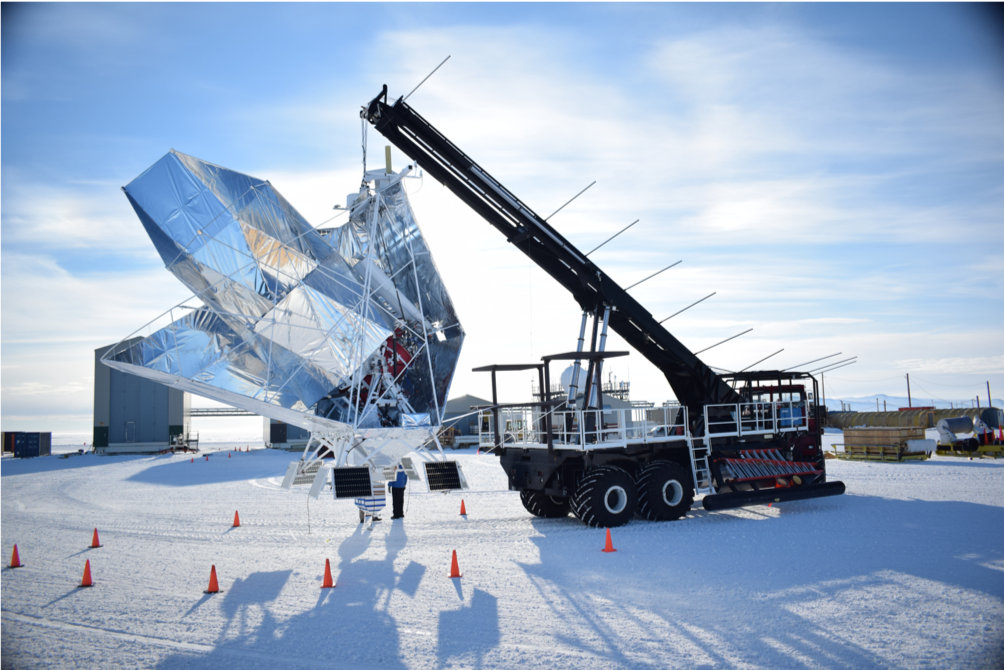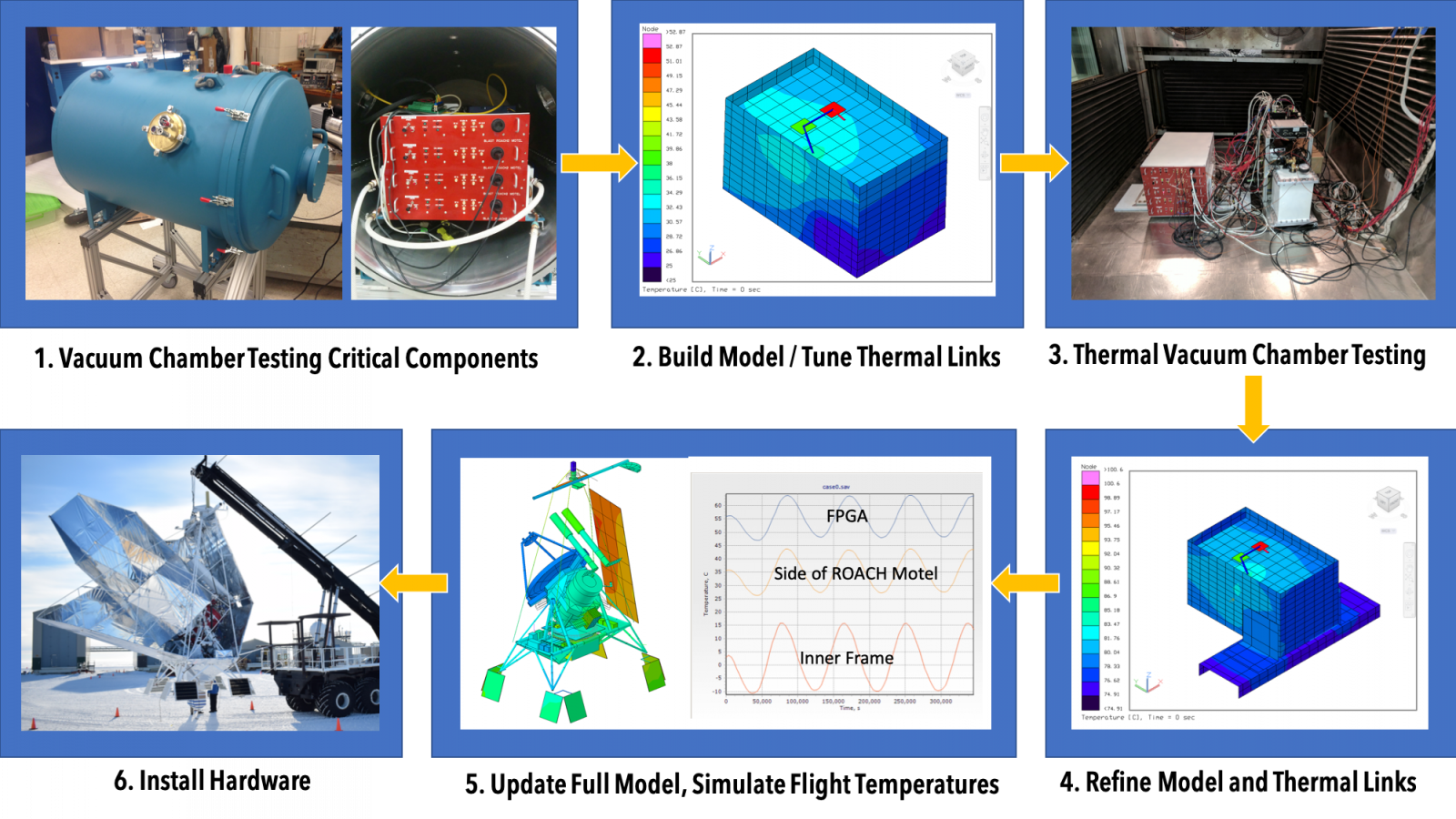by Nathan P. Lourie, University of Pennsylvania
BLAST-TNG (The Next Generation Balloon-borne Large-Aperture Submillimeter Telescope) is a telescope which will survey the origins of stars and planets, including systems similar to our own Solar System, from a high-altitude balloon flying through the stratosphere 35 km above Antarctica. The instrument features a cryogenically-cooled camera with extremely sensitive superconducting detectors, and a telescope with a 2.5-m-diameter carbon fiber composite mirror. The camera observes the thermal emission from interstellar dust around galactic molecular clouds, the locus of star formation in the galaxy, and is polarization-sensitive, enabling observations of the structure of magnetic fields in these regions. BLAST-TNG is funded by NASA, its detectors were built by National Institute of Standards and Technology (NIST) in Boulder, Colorado, and nearly all the major instrument systems were designed, built, and tested by graduate students and post-doctoral researchers at the University of Pennsylvania, Arizona State University, Northwestern University, and the National Radio Astronomy Observatory.
Accurate modeling of the thermal behavior of the balloon payload is a critical aspect of the instrument design, from the beginning stages of the project through the planned launch from McMurdo Station, Antarctica in December 2019. For BLAST-TNG, the most critical components to model are the electronics and the telescope optics, all of whose temperatures are controlled passively through careful design of large aluminized polyethylene Sun shields. The Sun shield design must manage the temperature of the entire payload and avoid direct illumination of the optics when observing all the required astronomical targets.

Figure 1: The BLAST-TNG experiment on the launch vehicle shown before its first launch attempt from McMurdo Station, Antarctica in January 2019, showing the extensive Sun shields.
During flight, the payload operates in a spacelike environment which is well-suited to modeling with Thermal Desktop and RADCAD, which simulates the radiative environment, orbital path around Antarctica, and the albedo from the ice sheets that the balloon passes over. However, the stratospheric environment presents unique challenges from the space environment which are harder to model “out of the box.” The conductive/convective cooling from the ~3 mbar ambient air pressure and low-velocity winds at the balloon altitude are especially hard to model. To ensure the model is accurate, all critical components are modeled through an iterative process of environmental testing in flight-like conditions to calibrate the component-level conductive links before simulating the performance of the full system in its stratospheric orbit. Further details of the Thermal Desktop model built for BLAST-TNG can be found in papers by (Soler et. al. 2014) and (Lourie et al, 2018).

Figure 2: Because the stratospheric environment is not a pure-radiative environment like space, critical components must be individually modeled and validated through an iterative process of environmental testing. The general approach is shown here, illustrated through the validation of the model for the detector readout electronics crate.
